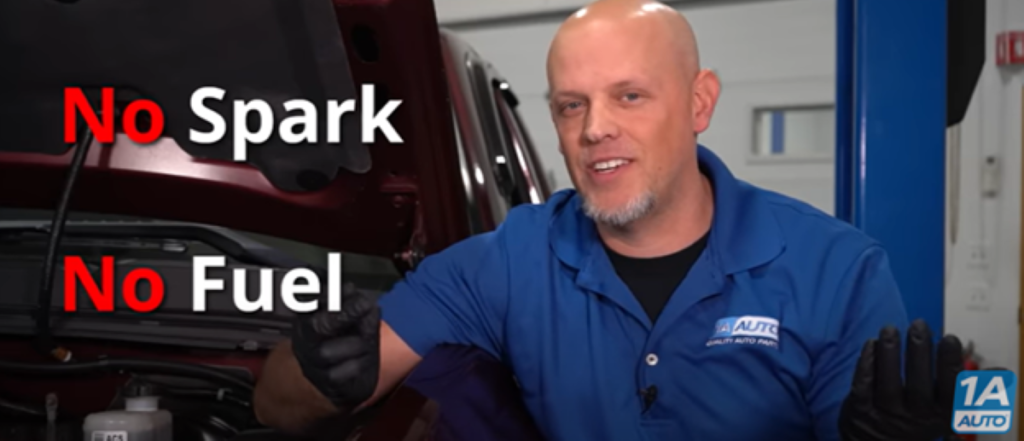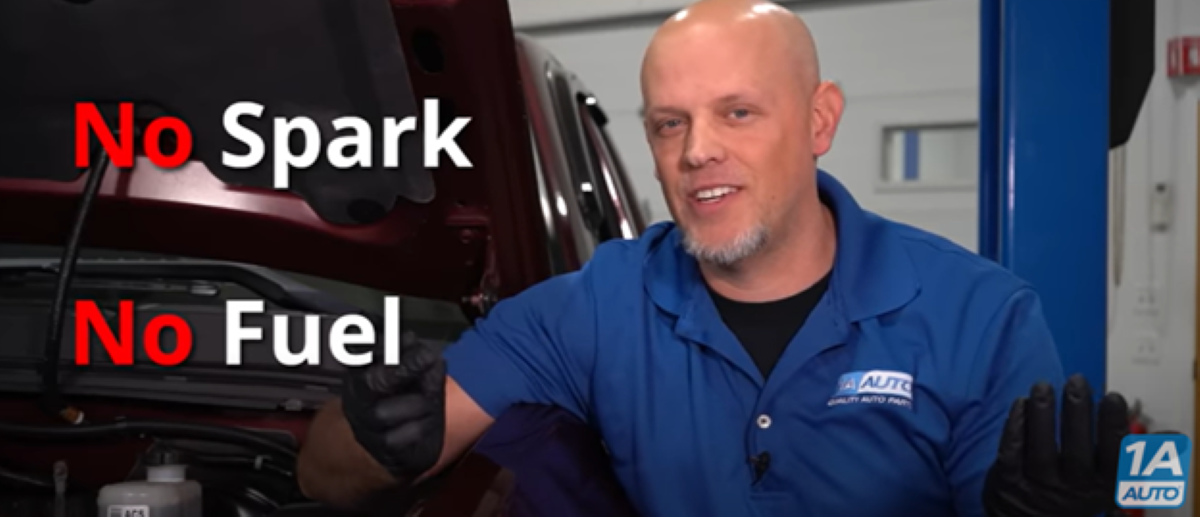If you have a car that won’t turn over but has power, meaning you have an engine that cranks but won’t start, check out these tips from our expert mechanic Andy. You’ll learn why your car has power but still won’t start and what parts typically cause this problem.
Common Causes of a Car That Has Power But the Engine Won’t Turn Over

If you put the key in and try to start your car but you hear the engine cranking and not starting, there’s a few parts usually known to cause this.
No Spark
A no spark condition means there’s a problem with the fuel and spark that power your engine. Parts known to leave you with a car that won’t turn over but has power include:
No Fuel
If you have spark and the engine still cranks but won’t start, there may be an issue with the fuel system.
Common parts of the fuel system that can cause a car to have power but not start:
- Fuel pump
- Fuel filter
Steps to Test a Car That Has Power But Won’t Turn Over or Start
How to test for a no spark or no fuel condition that may cause a car to have power but won’t turn over
- Test the Spark with a Spark Tester
You can test the spark plugs and ignition coils with a spark tester. You just need to remove the ignition coil or spark plug wire, and connect it to either of those and the spark plug.
Have an assistant crank the engine. If the tester does not light up while cranking the engine, you’ll need to inspect the ignition system to find out why there’s no spark.
Spark plugs can cause your car to have power but not start if they’re worn and haven’t been replaced soon enough.
More on testing spark plugs with a spark plug tester
- Check the Ignition Coil Pack
Usually bad ignition coil packs can leave you with a car that has power but won’t turn over. Coil packs are different from coil-over-plugs, which is an ignition coil that’s placed above the spark plug. Coil packs have multiple coils attached in one pack, so if it fails it’s known to cause this problem instead of a flashing check engine light and misfire, like with a bad coil-over-plug type.
If there’s no spark, it may be from a bad ignition coil pack. Check the pack for damage.
More on different kinds of ignition coils
More on how to test a bad ignition coil
- Check for Cam or Crank Sensor Codes
Connect a scan tool to the OBD-II port and check for any check engine light codes. A crank sensor or cam sensor code could be the cause of the engine not turning over. There may be a problem with the sensor or the wiring.
The crank sensor helps the computer know when to send a spark. If there’s a problem with the sensor’s ability to tell when the engine spinning, the computer won’t know when to send a spark and the engine won’t start.
A failing cam sensor may start the engine after a few tries as the computer tries to guess where it should send spark.
More on crankshaft position sensors
More on how to diagnose a camshaft position sensor code - Check the Fuel Pump
No spark means there may be a problem with the fuel system. The fuel pump sits in the gas tank in most vehicles. An electric pump sends fuel through the lines to the engine. Fuel injectors send the fuel into the engine for combustion.
Have an assistant turn the key so the power is on and listen for the pump to turn on in the tank. You can hear what this sounds like at 3:00 in the video above.
Even if the fuel pump is running, there may be a clog in the system. There could be a clogged fuel filter, which on many vehicles is part of the fuel pump assembly, or the pump could be weak.
If the fuel pump is running, its motor may be stuck. You might be able to temporarily fix this by tapping the bottom of the fuel tank with a rubber mallet to get the engine running. If this works, it’s also a sign the fuel pump needs a replacement.
More on how to test a fuel pump - Check the Fuel System Pressure
You can connect a fuel pressure gauge to the fuel port and test the system to check for the correct amount of pressure.
Not everyone has a fuel pressure gauge, and it’s still possible to test the fuel pressure without one. While wearing safety glasses and gloves, you can also place a rag underneath the fuel Schrader valve and press the valve with a screwdriver to check for pressure. If you press on this valve after the fuel pump was pumping and nothing exits the valve, the pump isn’t pumping enough fuel. This means you either have a restriction like a clog or a weak pump.
More on how to check fuel pressure
How-to Videos for Your DIY Car Repairs
Learn how to fix and maintain your car with our how-to videos, follow the instructions and tips from our mechanics, and start working on your car yourself.
Shop Quality Auto Parts


